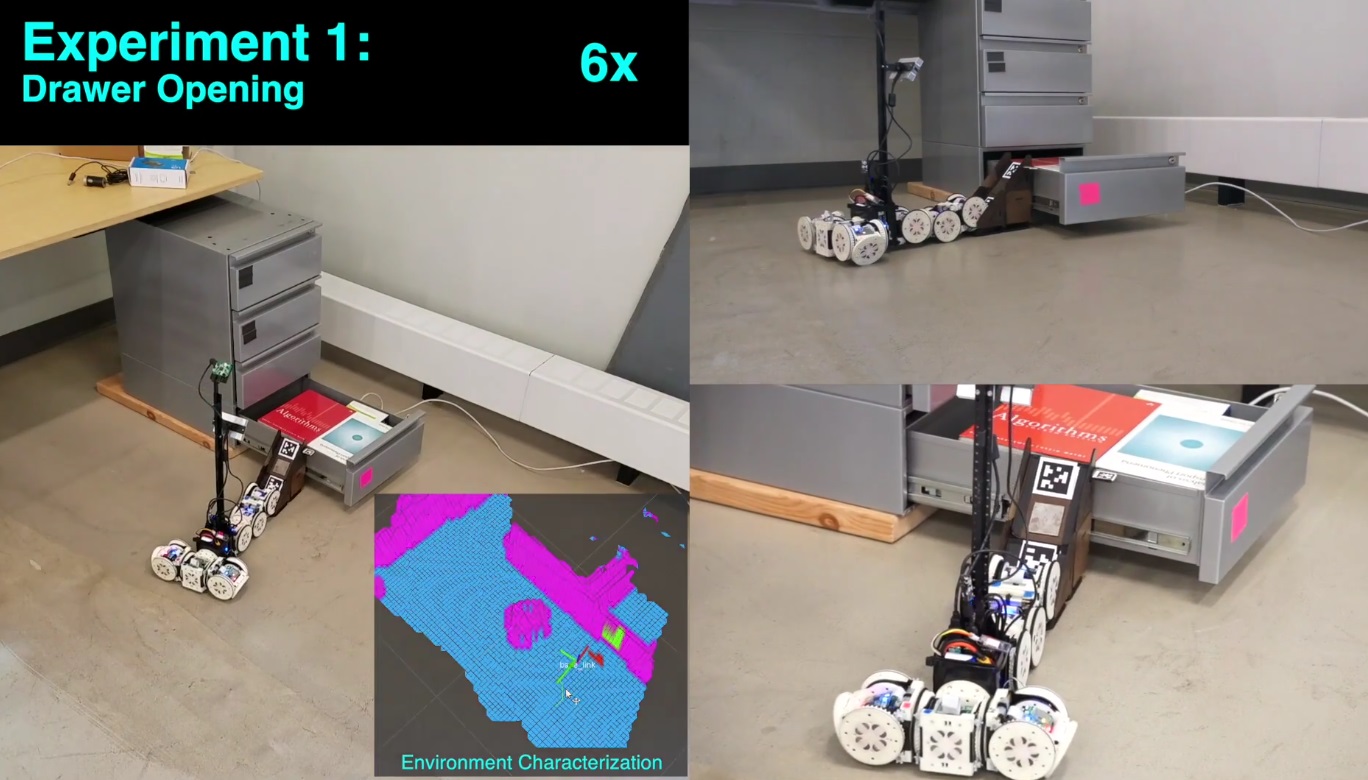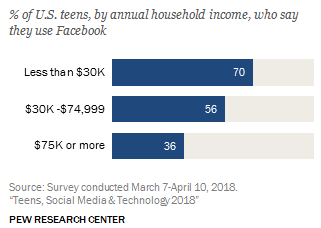Music
Trailers
DailyVideos
India
Pakistan
Afghanistan
Bangladesh
Srilanka
Nepal
Thailand
Iraq
Iran
Russia
Brazil
StockMarket
Business
CryptoCurrency
Technology
Startup
Trending Videos
Coupons
Football
Search
Download App in Playstore
Download App
Best Collections
Technology
A robotgot to know its limitations. But that doesn&t mean it has to accept them. This one in particular uses tools to expand its capabilities, commandeering nearby items to construct ramps and bridges. Itsatisfying to watch but, of course, also a little worrying.
This research, from Cornell and the University of Pennsylvania, is essentially about making a robot take stock of its surroundings and recognize something it can use to accomplish a task that it knows it can&t do on its own. Itactually more like a team of robots, since the parts can detach from one another and accomplish things on their own. But you didn&t come here to debate the multiplicity or unity of modular robotic systems! Thatfor the folks at the IEEE International Conference on Robotics and Automation, where this paper was presented (and Spectrum got the first look).
SMORES-EP is the robot in play here, and the researchers have given it a specific breadth of knowledge. It knows how to navigate its environment, but also how to inspect it with its little mast-cam and from that inspection derive meaningful data like whether an object can be rolled over, or a gap can be crossed.
 It also knows how to interact with certain objects, and what they do; for instance, it can use its built-in magnets to pull open a drawer, and it knows that a ramp can be used to roll up to an object of a given height or lower.
It also knows how to interact with certain objects, and what they do; for instance, it can use its built-in magnets to pull open a drawer, and it knows that a ramp can be used to roll up to an object of a given height or lower.
A high-level planning system directs the robots/robot-parts based on knowledge that isn&t critical for any single part to know. For example, given the instruction to find out whatin a drawer, the planner understands that to accomplish that, the drawer needs to be open; for it to be open, a magnet-bot will have to attach to it from this or that angle, and so on. And if something else is necessary, for example a ramp, it will direct that to be placed as well.
The experiment shown in this video has the robot system demonstrating how this could work in a situation where the robot must accomplish a high-level task using this limited but surprisingly complex body of knowledge.
In the video, the robot is told to check the drawers for certain objects. In the first drawer, the target objects aren&t present, so it must inspect the next one up. But ittoo high — so it needs to get on top of the first drawer, which luckily for the robot is full of books and constitutes a ledge. The planner sees that a ramp block is nearby and orders it to be put in place, and then part of the robot detaches to climb up and open the drawer, while the other part maneuvers into place to check the contents. Target found!
In the next task, it must cross a gap between two desks. Fortunately, someone left the parts of a bridge just lying around. The robot puts the bridge together, places it in position after checking the scene, and sends its forward half rolling towards the goal.
These cases may seem rather staged, but this isn&t about the robot itself and its ability to tell what would make a good bridge. That comes later. The idea is to create systems that logically approach real-world situations based on real-world data and solve them using real-world objects. Being able to construct a bridge from scratch is nice, but unless you know what a bridge is for, when and how it should be applied, where it should be carried and how to get over it, and so on, itjust a part in search of a whole.
Likewise, many a robot with a perfectly good drawer-pulling hand will have no idea that you need to open a drawer before you can tell whatin it, or that maybe you should check other drawers if the first doesn&t have what you&re looking for!
Such basic problem-solving is something we take for granted, but nothing can be taken for granted when it comes to robot brains. Even in the experiment described above, the robot failed multiple times for multiple reasons while attempting to accomplish its goals. Thatokay — we all have a little room to improve.
- Details
- Category: Technology
Read more: Watch a hard-working robot improvise to climb drawers and cross gaps
Write comment (91 Comments)Once a month or so, I&m reminded that my phone has a front-facing camera when I accidentally hit the toggle button, only to be greeted with a closeup image of my own, dumb face.
Honestly, I can&t remember the last time I used the thing — not intentionally, at least. I tried scrolling through my camera roll to locate the precise moment in which I felt compelled to take a selfie, but ultimately ended up getting tired of the exercise, giving up some time around May of last year.
I have no use for the front-facing camera. I don&t know, maybe I&m in the minority on this one, but I&m pretty sure I&m not alone. Every time I see another phone with another notch or hear stories about companies frantically pushing for some workaround, I quietly wonder what it would be like to live in a world where that wasn&t an issue, because there was no camera getting in the way of that precious screen real estate.
I realize for most mainstream manufacturers, this is probably just a pipe dream. Too many companies have invested too much in the technology to make it appear unnecessary. In recent years, the device has taken on an importance beyond the selfie, including, most notably, the big push by Apple, Samsung and countless Android manufacturers to add face unlock.
There are the proprietary apps like FaceTime and Animoji and a powerful lobby of third-party social media companies that rely on the inclusion of as many cameras as humanly possible on a mobile device. I suppose I fall out of that target demographic. I don&t Snapchat or FaceTime, and when the Google app changed from Hangouts to Meet and I suddenly saw video of myself staring back, again, total freak-out.
Perhaps itbest left to some smaller manufacturer looking to distinguish themselves from a million other Android manufacturers. Someone out there could be the first to go truly full screen, without a silly gimmick like the Vivopop-up, or whatever eight million patents Essential has filed over the past couple of years. Full screen, without the inherent vanity of that unblinking eye staring back at you.
I&m not saying its enough for one company to get me to switch over, but it2018 and 90 percent of smartphones look virtually identical. Why not at least give the consumer the ability to opt out, at least until phone manufacturers solve the notch
- Details
- Category: Technology
Read more: I would happily ditch the selfie camera for a full-screen phone
Write comment (91 Comments)CancerAid, a self-reporting and symptom monitoring tool for cancer patients, has scored its first major coup in the U.S. healthcare market with its integration into Epic Systems electronic health records at Cedars Sinai in Los Angeles and an integration with AppleHealthKit.
Cedars, an investor in the company through an accelerator program it ran in conjunction with Techstars, marks the first U.S. hospital system to incorporate CancerAidself-reporting information into a dashboard system for doctors.
Itbeen a long road for company co-foundersRaghav Murali-Ganesh and Nikhil Pooviah, who first met eight years ago at the Chris O&Brien Lifehouse,a Sydney, Australia cancer treatment center.
Pooviah was a resident working with Murali-Ganesh in radiation oncology, positions the two men occupied for several years before venturing off on their own to launch the service that would become CancerAid.
The companyinitial inspiration came from years spent checking out the tools that were already in the market for cancer patients — tools like Chemo Calendar that helped with things like scheduling and monitoring appointments.
Instead of studying for some particularly tricky upcoming exams, Pooviah was spending time developing a patient-facing self-reporting symptom tracker and a community portal for cancer patients to discuss, share and monitor their own symptoms.

CancerAid co-founders Drs. Nikhil Pooviah and Raghav Murali-Ganesh and Martin Seneviratne
It was that first tool that won the company acceptance into the Cedars Sinai accelerator and a competitive position in TechCrunchinaugural Startup Battlefield competition in Sydney, Australia.
From its initial development, CancerAid now has four primary functions. On the patient side, therepersonalized cancer information for patients after their initial diagnosis. The company also provides a personal journal and symptom journal for patients to report on how they&re feeling, both emotionally and physically, as they progress through their treatment.
A feature the company calls &Champions& was added so that family and friends could keep up with patients and encourage them. And finally, the company added a social networking feature so patients could connect with a broader community of patients and survivors.
Now, the company has added &ClinicianLink,& a clinician-facing dashboard that sits in Epic and integrates with the existing workflows of nurses, oncologists, radiologists and the rest of the hospital administration and operational staff that touches patients as they undergo treatment.
The company expects to lock in six-figure licensing deals for hospital systems to access the entire toolkit and offer it to patients.
For hospitals, theresome research that suggests simply by reporting their symptoms patients can improve their own outcomes, because doctors have a better sense on more regular intervals of the potential problems their patients face, the company said.
&Patients will be able to use the patient-facing app at home, with a feedback loop back to their care team (physicians, nurses) in the hospital in real-time,& wrote Pooviah in an email. &This feedback loop helps reduce [emergency room] visits and 30 day readmissions (saving $19,000 per patient per year).&
Beyond the Epic integration, CancerAid is also integrating with HealthKit — so that Apple wearables will be able to have the CancerAid functionality, the company said.
The company has 20,000 patients on the app already, and is being used in 80 of the 200 largest U.S. health systems, according to Pooviah.
Backed by $1.9 million in funding from strategic and financial investors, including Cedars-Sinai Health System, Techstars, AustraliaShark Tank, Slingshot Ventures and Artesian Capital, the company is looking to expand in the U.S. through a dedicated subsidiary as it concentrates on one of the worldlargest healthcare markets.
- Details
- Category: Technology
Walmart tech incubator is out with its first experiment. The incubator, known as Store No. 8, just launched Jetblack, a concierge-style service for requesting stuff and getting it really quickly. During its pilot period, the project was known as Code Eight.
To shop with Jetblack, first you need an invite. Right now the service is limited to some customers in Manhattan and Brooklyn who are part of an eight-month pilot program restricted to buildings with a doorman, though that will soon expand and a waitlist is available now. The service is $50 a month —considerably less than some adjacent competitors, while considerably more than Amazon Prime — and promises same-day delivery.
While concierge services like Hello Alfred position themselves as high-end options for people wishing to live more serene lives, Jetblack is focusing on &time-strapped urban parents& seeking &more efficient ways to shop for themselves and their families.& To request something, Jetblack members send a text message and will receive product recommendations sent back in text. Those recommendations are culled from Walmart and Jet.com but also from specialty retailers locally.
That means any product request is fair game and &sourcing a specific beauty cream from a memberfavorite local boutique, curating custom Easter baskets and delivering them once the kids are asleep and rushing beach essentials to a family on vacation& are all within the realm of Jetblack fulfillments.
&Consumers are looking for more efficient ways to shop for themselves and their families without having to compromise on product quality,& said Jetblack co-founder and CEO Jenny Fleiss, formerly of Rent the Runway.
&With Jetblack, we have created an entirely new concept that enables consumers to get exactly what they need through the convenience of text messaging and the freedom of a nearly unlimited product catalogue.&
It&ll be interesting to see if these kind of personal shopping services can differentiate themselves in markets already well-acquainted with same-day shipping. While what makes Jetblackproposition unique isn&t that clear, itworth noting thanks to its roots in the biggest brick-and-mortar retailer around.
- Details
- Category: Technology
Read more: Walmart's new individual shopping service Jetblack launches in New york city
Write comment (96 Comments)A Pew survey of teens and the ways they use technology finds that kids have largely ditched Facebook for the visually stimulating alternatives of Snapchat, YouTube and Instagram. Nearly half said they&re online &almost constantly,& which will probably be used as a source of FUD, but really is just fine. Even teens, bless their honest little hearts, have doubts about whether social media is good or evil.
The survey is the first by Pew since 2015, and plenty has changed. The one that has driven the most change seems to be the ubiquity and power of smartphones, which 95 percent of respondents said they had access to. Fewer, especially among lower income families, had laptops and desktops.
This mobile-native cohort has opted for mobile-native content and apps, which means highly visual and easily browsable. Thatmuch more the style on the top three apps: YouTube takes first place with 85 percent reporting they use it, then Instagram at 72 percent, and Snapchat at 69.
 Facebook, at 51 percent, is a far cry from the 71 percent who used it back in 2015, when it was top of the heap by far. Interestingly, the 51 percent average is not representative of any of the income groups polled; 36 percent of higher income households used it, while 70 percent of teens from lower income households did.
Facebook, at 51 percent, is a far cry from the 71 percent who used it back in 2015, when it was top of the heap by far. Interestingly, the 51 percent average is not representative of any of the income groups polled; 36 percent of higher income households used it, while 70 percent of teens from lower income households did.
What could account for this divergence The latest and greatest hardware isn&t required to run the top three apps, nor (necessarily) an expensive data plan. With no data to go on from the surveys and no teens nearby to ask, I&ll leave this to the professionals to look into. No doubt Facebook will be interested to learn this — though who am I kidding, it probably knows already. (Thereeven a teen tutorial.)
Twice as many teens reported being &online constantly,& but really, ithard to say when any of us is truly &offline.& Teens aren&t literally looking at their phones all day, much as that may seem to be the case, but they — and the rest of us — are rarely more than a second or two away from checking messages, looking something up and so on. I&m surprised the &constantly& number isn&t higher, honestly.
Gaming is still dominated by males, almost all of whom play in some fashion, but 83 percent of teen girls also said they gamed, so the gap is closing.
When asked whether social media had a positive or negative effect, teens were split. They valued it for connecting with friends and family, finding news and information and meeting new people. But they decried its use in bullying and spreading rumors, its complicated effect on in-person relationships and how it distracts from and distorts real life.
Here are some quotes from real teens demonstrating real insight.
Those who feel it has an overall positive effect:
- &I feel that social media can make people my age feel less lonely or alone. It creates a space where you can interact with people.&
- &My mom had to get a ride to the library to get what I have in my hand all the time. She reminds me of that a lot.&
- &We can connect easier with people from different places and we are more likely to ask for help through social media which can save people.&
- &It has given many kids my age an outlet to express their opinions and emotions, and connect with people who feel the same way.&
And those who feel itnegative:
- &People can say whatever they want with anonymity and I think that has a negative impact.&
- &Gives people a bigger audience to speak and teach hate and belittle each other.&
- &It makes it harder for people to socialize in real life, because they become accustomed to not interacting with people in person.&
- &Because teens are killing people all because of the things they see on social media or because of the things that happened on social media.&
That last one is scary.
You can read the rest of the report and scrutinize Pewmethodology here.
- Details
- Category: Technology
Read more: Teens dump Facebook for YouTube, Instagram and Snapchat
Write comment (100 Comments)TechCrunch Disrupt SF 2018 is coming to Moscone West on September 5-7, and this year will be twice as big and better than ever. We&re looking for startups to be a part of our massive menagerie of innovation, Startup Alley. If you&ve never been to a Disrupt, Startup Alley is where hundreds of early-stage companies (which are pre-series A although, we do make some exceptions) showcase their talent and technology to attendees, investors and members of the press. This year, we&re expecting more than 1,200 startups to be in attendance.
Plus, we have some contests and giveaways just for those who sign up for a Startup Alley Exhibitor Package— yup, you have a chance to snag some free stuff! Who doesn&t want in on that!
All you have to do is buy a Startup Alley Exhibitor Package for $1,995, and you might get one (or more!) of these opportunities:
- All startups who purchase a Startup Alley Exhibitor Package will be entered into a drawing to win 2 VIP Disrupt SF dinner tickets; a rare chance to mingle with TechCrunch editors, investors and other tech enthusiasts
- One startup from Startup Alley will be selected at random every week leading up to Disrupt SF to be featured on our website and in an email as the &Startup Alley Spotlight of the Week&
- 25 startups from Startup Alley will be selected at random every month leading up to Disrupt to have a 60-second flash pitch on the Showcase Stage (that75 startups who get to pitch!)
These incentives are available for Startup Alley Exhibitor Package purchases right now — remember, all you have to do is buy a table (and you get THREE Founder passes to the full conference if you buy before July 25), and you could walk away from Disrupt with some shiny new connections, exposure and more! But don&t take our word for it — the CEO of Testcard.com, Luke Heron said, &If you&re a startup or an entrepreneur, exhibiting at Disrupt is a no-brainer.& Even Vlad Larin of Zeroqode told us that &TechCrunch Disrupt was a massively positive experience. It gave us the chance to show our technology to the world and have meaningful conversations with investors, accelerators, incubators, solo founders and developers.&
So, what are you waiting for Secure your table today.
- Details
- Category: Technology
Read more: Why now is the time to join Startup Alley at Disrupt SF
Write comment (96 Comments)Page 5211 of 5614

 15
15





